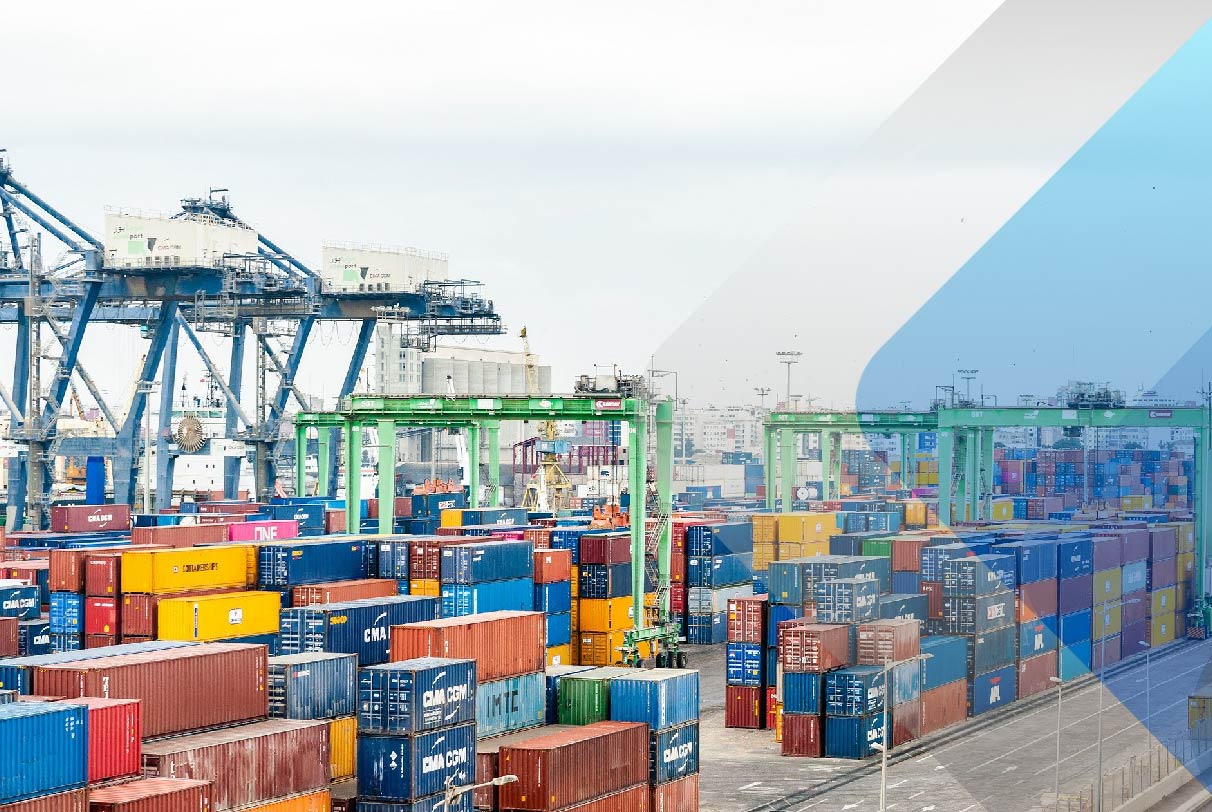Table of Contents
A growing number of companies are showing an interest in nearshoring, whereby production and other aspects of operations carried out overseas are moved closer to their home base or target markets. While costs are a central consideration, several other advantages of nearshoring are contributing to its increasing uptake.
Shifting tides in the global economy and evolving consumer behaviour has created an expanding number of advantages of nearshoring that companies want to tap into, with an uptick in online enquiries about the topic highlighting growing curiosity.
There is also an increasing amount of support on offer for companies looking to nearshore, with the Inter-American Development Bank (IDB) announcing earlier this year that it would provide financial and material support to companies seeking to shift operations to Latin America.
But nearshoring takes several different forms, depending on the business you do and type of employees you rely on. So the advantages of nearshoring can vary considerably.
For example, if a company is involved in heavy manufacturing, nearshoring could involve moving large-scale production operations and setting up new specialist facilities. While for companies working in the likes of IT, it might simply mean seeking tech talent in new markets that are closer to home.
SEE ALSO: Best alternatives to hiring US tech workers
Below, five key nearshoring benefits are highlighted, before some consideration is given to disadvantages that should be taken into account. However, first, further insight is provided into what nearshoring involves.
Serviap Global assists clients in dozens of markets across six continents with professional employer organization (PEO) and recruitment services. Wherever you are seeking direct hires or to outsource employment, we are ready to help. Contact us today.
What is nearshoring?
Nearshoring involves moving production and other elements of value chains closer to the location where a company is based or has its primary markets.
For North American and European companies, it is often used to refer to a shift away from Asia, where China and a number of other countries have developed as major hubs of manufacturing and industrial output since the 1990s, and more recently for tech development.
Such a move is based on a range of factors, with one of the most significant advantages of nearshoring being related to costs – especially the comparative cost of employees, which has risen significantly in some parts of Asia over recent years, as highlighted in the graph below.


Geopolitics is also a factor, with some companies seeking to reduce their reliance on and support for countries that are perceived to be rivals of their home nations, instead seeking to help forge closer ties with nearby economies.
For North American companies, nearshoring generally refers to shifting operations to Latin America and the Caribbean, while for Western European companies it often means shifting to Eastern Europe and Africa. In richer Asian nations, meanwhile, it can mean basing operations in the likes of Southeast Asia.
However, it can refer to any shift of operations closer to home, with IDB President Mauricio Claver-Carone making it clear that the IDB scheme to support nearshoring to Latin America was open to European countries.
“I am not [just] talking about nearshoring, thinking only of the United States, but also of Spain. If there are Spanish companies that have invested their value chain in China or other Asian countries and want to transfer that chain to Latin America, the IDB will finance it. I believe that Europeans are beginning to see this as an opportunity,” he was quoted as saying by Spanish newspaper El Mundo.
For the likes of IT companies, which rely on skilled talent but do not necessarily need extensive facilities or even office space, nearshoring will often simply mean a shift to employing staff in closer markets.
In such cases, an increasingly popular choice to hire them via an outsourcing provider, with PEO services seeing growing uptake over recent years. PEO involves a provider hiring staff in a particular market on behalf of a client, overseeing their payroll, onboarding, and other administrative matters in the process, while those staff report directly to the client.
That not only allows for rapid market entry, with the only delay being the time it takes to find the right employees, but it also means the elimination of compliance issues, with the PEO client able to rely on the provider’s expert understanding of the local regulatory regime.
4 nearshoring benefits to consider
When weighing up the advantages of nearshoring, the cost of employees will obviously be high up on the list. However, the following four nearshoring benefits will also be worth considering.
1) Improved communications
When a US company shifts operations to Latin America or a European company moves to elsewhere in Europe, one of the major advantages of nearshoring they will notice is the fact that those operations are now based in a much closer time zone – if not the same one – while linguistic barriers are likely to be lower.
In the case of US and Canadian companies nearshoring to Latin America and the Caribbean, only the eastern coast of Brazil falls outside one of the six time zones occupied by the two North American nations. In Europe and Africa, meanwhile, the vast majority of countries are located within just three adjacent time zones.
Working in closer time zones is good for communications in the sense that operations will be undertaken at a similar time to company headquarters. It is also beneficial on the basis that in many cases communication will be eased by greater linguistic similarities and proficiency – especially in Europe, where English proficiency will tend to be higher than in many Asian countries.
2) Better accessibility and oversight
One of the key nearshoring benefits related to that closer proximity is the greater accessibility it offers – both in terms of transporting goods and overseeing operations. That is especially true when a company is producing or manufacturing a product that is aimed at the company’s home market.
Shipping times are significantly reduced when operations are moved closer to home, with US companies that transfer value chains from Asia to Mexico even able to rely on road haulage rather than having to ship goods. Even for US and Canadian companies that are also targeting European markets, the time taken to reach markets across the Atlantic from Latin America is significantly less than when shipping from Asia.
Moreover, given that operations are now much closer to home, it is considerably easier for company representatives to travel to oversee them. Most European destinations are within a few hours flight of each other, while there is regular travel between major US, Canadian, and Latin American cities. That makes traveling shorter and easier on those traveling, with jet lag less of an issue.
3) Cultural similarities
While there will always be cultural differences between any two countries, those differences will often to be less pronounced between countries that are closer to each other.
So, while a US company is likely to come across certain cultural barriers when doing business in Latin America, one of the advantages of nearshoring is that they will likely be less prominent than the differences felt when doing business in Asia. The same can be said for European companies nearshoring to elsewhere in Europe or Africa, or Asian companies nearshoring to other parts of Asia.
What’s more, the differences that do exist will often be better understood thanks to historic regional interactions and migration, especially between the United States and Canada, and Latin America, as well as among European or Asian countries.
4) Lower environmental and transport costs
In the context of climate change, which has fueled consumer demand for greener goods and services, companies are increasingly tuned into their environmental footprint, which can be significantly reduced by nearshoring production closer to target markets.
Shipping accounts for 3% of global CO2 emissions, and one-tenth of those generated by transport. With the shipping industry lagging behind in decarbonization efforts, by some estimates, its impact could increase by 120% in the coming years. So among nearshoring benefits is the fact that by reducing reliance on shipping and the length of sea journeys, businesses are able to significantly lessen their environmental impact.
Moreover, tariffs associated with shipping tend to increase based on the distances being travelled, so by cutting shipping mileage, companies can also often see major reductions in costs related to shipping goods to market.
Disadvantages of nearshoring
When considering the advantages of nearshoring, it is also important to properly weigh up the disadvantages, which can vary according to what type of business you are running.
For companies contemplating moving large-scale production facilities or other complex aspects of operations to a new market closer to home, the process will involve significant upheaval, in terms of the actual movement of goods and equipment, as well as in terms of the learning curve involved in entering a new market.
While one of the advantages of nearshoring is that it may ultimately be more cost effective, it will generally involve some outlay at the beginning — an obstacle that the IDB has sought to help overcome.
It could also see some delays to operations if the company is not able to set up production in the new market prior to shutting it down where it currently operates.
Finding a good partner to work with in the new market can also be an area of concern, because choosing to move from one region to another will usually involve the need to break up a relationship with a local provider or partner that has likely worked well.
On top of that, finding the right talent to carry out the work needed in a new market can also be a challenge, along with negotiating a new regulatory regime and avoiding legal inconveniences and financial penalties for non-compliance.
Serviap Global offers recruitment and PEO services around the world
At Serviap Global, we offer international PEO / EOR services and provide global talent acquisition services to assist with direct hires.
We assist clients in dozens of countries across six continents, so wherever you are seeking to hire, we are ready to help.
Contact us today to discuss how we can assist you or read more about us.
If you this article on nearshoring benefits and the advantages of nearshoring was of interest to you, check out the rest of our coverage.






























